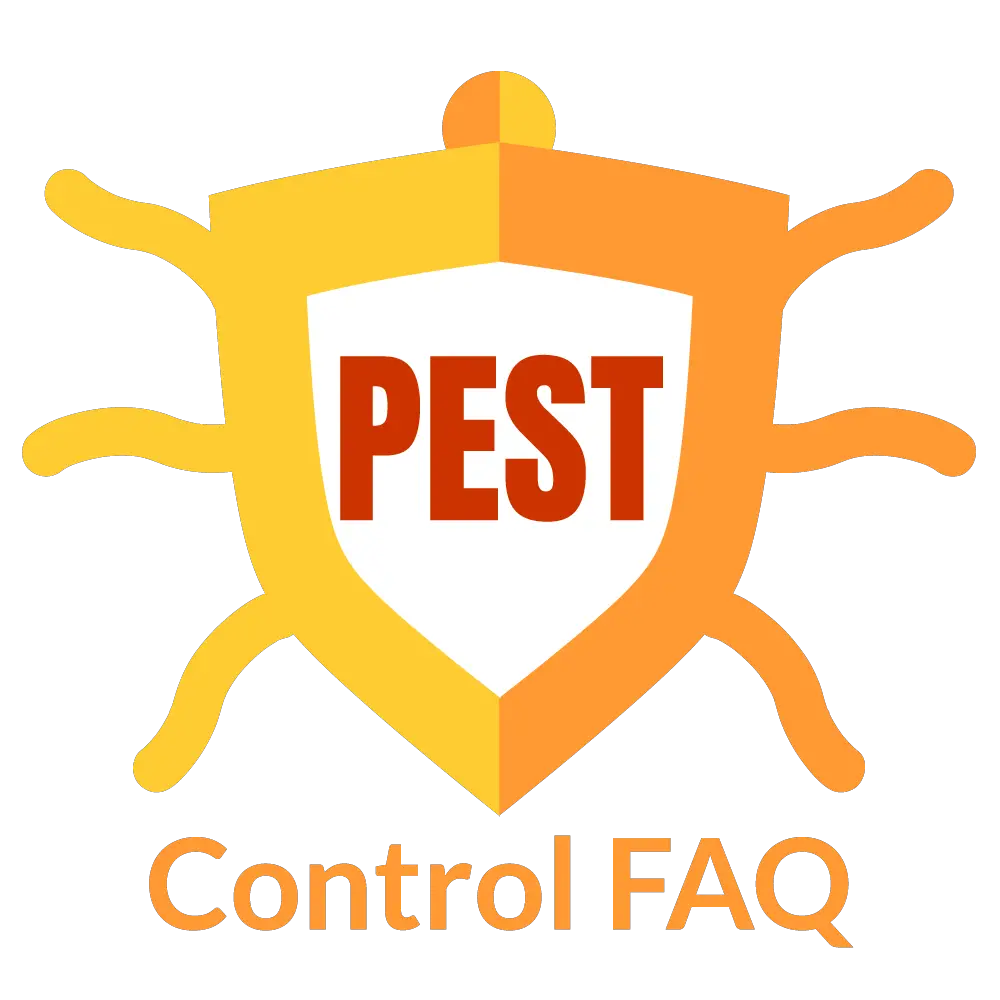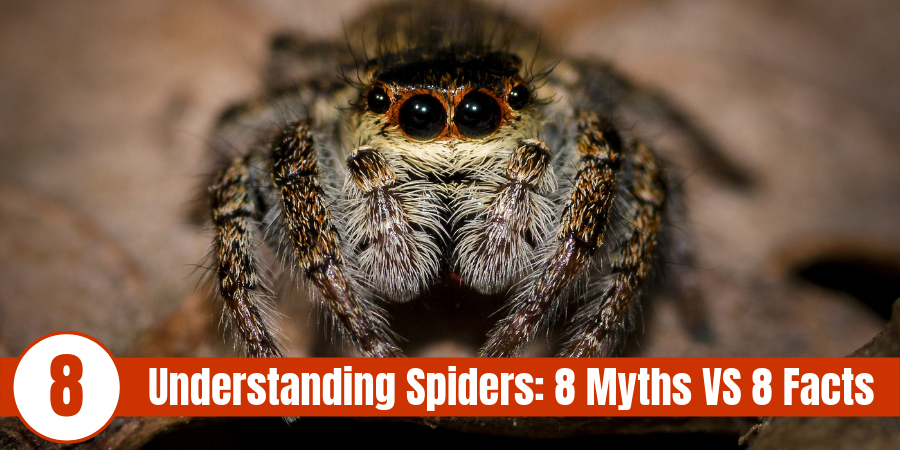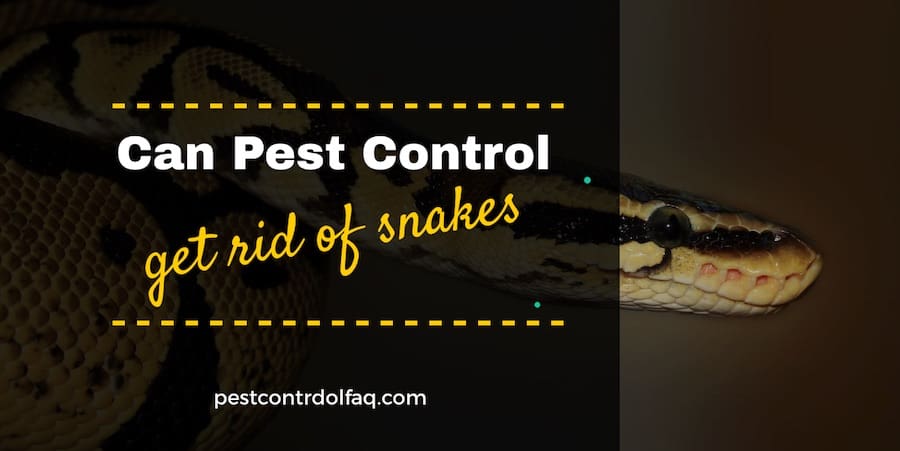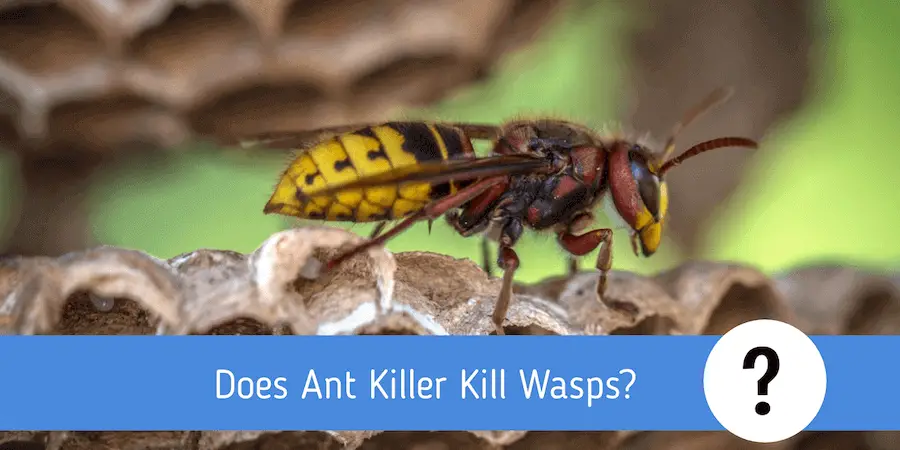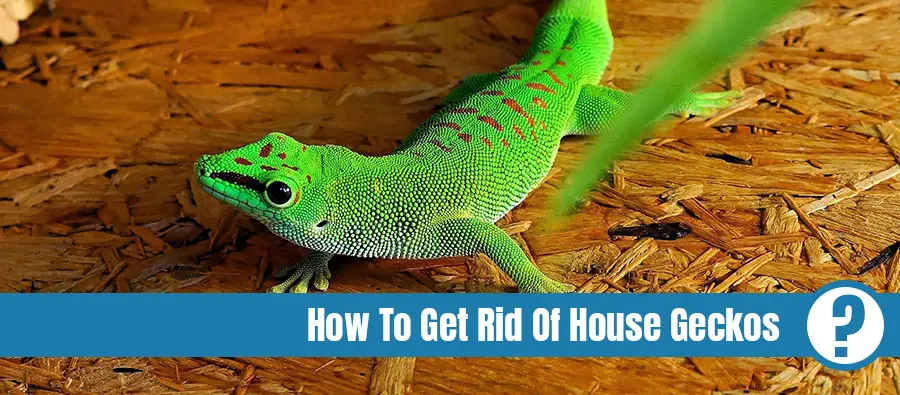From Daddy Long Legs to the Black Widows, there are such a wide variety of spiders in our world, but only a tiny fraction of them are dangerous to us. I want to try to separate fact from fiction in the spider world and help you learn to appreciate them just a bit better since spiders can actually be very good housemates.
What are some spider myths that most people think are fact? Sometimes it can be hard to tell what is fact and what’s fiction. Here are some common myths about spiders, but are they fact or fiction?
- All eight-legged insects are spiders
- Widows always kill the males during mating
- Daddy Long Legs have enough venom to kill a human
- Some spiders can lay eggs under your skin
Spiders are fascinating little creatures, and some are even fascinated by humans as well, and they are not the scary monsters that some movies make them out to be.
Myth #1 – All Eight Legged Insects are Spiders
This myth is actually a pretty popular one and is factually incorrect in many ways. First, if it has eight legs, it’s not an insect anyways. Insects have six legs, not eight. Eight legged bugs are called arachnids, but not all of them are spiders. Even names can be confusing as some arachnids are called spiders, but they aren’t actually real spiders at all.
All spiders are arachnids, but not all arachnids are spiders. Spiders came from the order Araneae, which is a subsection of arachnids. Scorpions, for example, are arachnids, and they are eight-legged, but scorpions are clearly not spiders. The same case applies to mites and ticks, in that they are eight-legged, but are clearly not spiders.
Only bugs that fall in the order of Araneae are considered true spiders, though there are some arachnids such as a camel spider (order Solifugae) that are not true spiders. True spiders have spinnerets while camel spiders do not.
Fact #1 – Not All Arachnids are Spiders
Arachnids cover a wide variety of bugs that are not insects. Insects and arachnids both fall under the group of animals called arthropods. Arthropods also include creatures such as crustaceans, like crabs and lobsters.
The classification of arachnids also includes things like scorpions or pseudoscorpions, whip scorpions, and even mites and ticks, but none of them are spiders. Some arachnids may even have “spider” in their name, but they are not true spiders.
While the class Arachnida is one of the largest classifications of bug life, the order Araneae, to which spiders belong, is the largest group of arachnids. Besides the order Araneae, there are ten different orders of arachnids, plus three that are extinct. The second-largest order is the order Acari, which ticks and mites belong to.
Myth #2 – Widows Always Kill the Male During Mating
Widows, so named because many times, in captivity, they were observed killing the males during the reproductive process, do not always kill the male during or after mating. Widows, including black, red, and brown widows, are all venomous but are not always dangerous to humans.
In a few species, the male will entice the female to cannibalize him during the mating process to ensure that his semen can fill her organs, making sure that he is the only male to mate with her. He may do this by dancing or somersaulting in front of her before he begins the mating process.
The myth comes from a scientific observation in a laboratory setting that later was confirmed to be inaccurate at best in the wild. In a laboratory setting, the male cannot escape from the female, but this is not the case in the wild.
There are a few things that males can do to ensure their survival in the wild:
- Mating with a female that is nearly, but not quite mature. This requires a female that is internally mature, but not externally open to mating. A male will bite a hole in her external shell, insert his semen, and seal her back up. Due to the fact that she is not mature, she won’t attack him.
- Ensure that she has a full belly before attempting to mate. Hormones on her web will tell him if she has fed recently, and a full female is less likely to attack.
- If all else fails, run! Sometimes the mating hormone can overpower the survival instinct in a male spider. If he can mate quickly enough and run fast enough, he may still survive. While this was not possible in a lab setting, in the wild it does at least give a male widow spider a fighting chance, a slim one, but it is still a chance.
Fact #2 – Male Spiders Sometimes Eat the Female
In certain species of spider, it has been observed that some male spiders eat the female during copulation cannibalism, also called sexual cannibalism. This is usually observed in species where the male is equal in size or larger than the female of the species.
Studies have been done to determine when and why this is as it doesn’t really perpetuate the species if the female is being eaten. While the scientists did discover that larger males were more aggressive when it comes to their partner being their last meal, there were a few other factors that they took note of.
Some males would eat older females that were nearing the end of their reproductive life while other males preferred females that had just entered maturity.
In the species M. sociabilis, for example, the males were more choosy than the females were about mating partners, and those not chosen for mating became chosen for dinner instead. Kind of a harsh way to say you’re not interested, but it may be nature’s way of keeping the population in check.
Myth #3 – Daddy Long Legs have Enough Venom to Kill a Human
The fact is that what we call daddy long legs are actually a variety of spiders and some non-spider creatures. For example, some of the bugs referred to as daddy long legs would be the crane fly (which isn’t even an arachnid), the harvestman (which is an arachnid, but not a spider) and the long-legged cellar spider, which is at least an actual spider, though all of them are relatively harmless.
Since the long-legged cellar spider is the only one on the list that is an actual spider, let’s look at that one. While a long-legged cellar spider does have venom, it isn’t strong enough to poison a human. In fact, it’s not just weak to humans; it is weak to the insects it hunts as well. It is just enough to paralyze, not kill.
Since, however, the preferred diet of a long-legged cellar spider is huntsman spiders and redback spiders (a species of widow spider), they can be a species that may well be worth human protection. Huntsman and redback spiders can harm humans if disturbed, so keeping a few long-legged cellar spiders or daddy long legs around may be a positive thing.
Fact #3 – Most Spiders are Harmless
While the long-legged cellar spider is what most of us call a daddy long legs, it is a completely harmless arachnid, as Adam Savage of the Mythbusters proved. As part of an experiment to prove that daddy long legs were not the creatures to be feared as the myth states, he agreed to let a bunch of them bite him.
Afterward, even though it was a scary experience for him since he does have arachnophobia, he stated that the bites hurt, but not badly and not for a long period either.
Long-legged cellar spiders are a beneficial species, among many spider species, to keep in your home. Unless it is a venomous spider, usually just shooing a spider out of sight should be sufficient. Don’t go chasing spiders if they aren’t dangerous to humans because they are a great roommate to have in your home.
Of the thousands of different varieties of spiders that we have discovered, there is only a handful that is harmful to humans and even those probably won’t kill you. It would take a bite from a venomous spider, such as a black widow or brown recluse, to do any damage.
For a spider bite to be fatal, you would have to be bitten in the right location or be part of an at-risk population. This would include the very young, the very old or someone who is immunocompromised. Even if you did fall into this category, you would also have to be in a situation that you couldn’t seek immediate medical attention.
Treating a Spider Bite
For the most part, however, the majority of spider bites are completely harmless. If you are concerned about a bite, basic first aid should prevent almost any issue:
- Wash the bite with soap and water.
- Use a cold pack for pain and swelling
- Monitor the area for changes
- Try to determine the species that bit you (if it is a species such as a black widow or brown recluse, seek medical attention immediately)
Consult a doctor if any of the following occurs:
- the pain increases
- there is severe swelling
- the area changes to any color other than red
- if the area becomes infected
- if the swelling grows more than the size of a ½ dollar
- if it is still bothering you 24 hours later
- you are severely immunocompromised
Most spiders, including the long-legged cellar spider, do tend to be a bit territorial, so they will go after other spiders as well. Depending on the species, they may like to make a quick snack of other species. Long Legged cellar spiders, for example, are a wonderful addition to any home, but especially homes where black widows like to live.
Myth #4 – Some Spiders can Lay Eggs Under your Skin
Let me put you at ease, this one is pure myth, and one that should be saved for horror movies.
Unlike ticks, spiders are not a very tough species, as in they do not have a tough exoskeleton. They are incapable of breaking through the skin of humans to burrow or implant eggs, not that they lay eggs this way anyways. The makeup of the human body and human skin, in particular, is just too tight and would crush the spider before it even had a chance to lay its eggs.
To lay their eggs spiders will wrap their eggs in a silk ball called an egg sack and leave that egg sack someplace safe. For those spiders that don’t use an egg sack, they will carry their babies around on their backs, similar to what a scorpion will do. This allows the spider to protect her babies until they are old enough to venture out on their own.
Fact #4 – Not All Spiders Abandon Their Young
Nearly every spider species will make an egg sac to protect their babies, at least until they hatch. Most spider moms will keep an eye on their eggs until they hatch and some will even stay close enough to care for them even after they hatch.
One amazing spider is the wolf spider. This dedicated mother will carry her egg sac with her no matter where she goes, and after the babies hatch, she will continue to care for them until they are fully developed. She won’t let a single baby fall behind either. If a baby falls off before it is ready to survive alone, she will stop and wait for it to crawl back onto her back.
Though some spiders are the set it and forget type of moms too. They will lay their eggs in the egg sac and either die somewhere close or will just wander off, never giving the spiderlings another thought.
Myth #5 – We Swallow Eight Spiders a Year in our Sleep
While it may be possible that at some point in our lives, some humans may have swallowed a spider, they will not typically wander aimlessly to their deaths. Imagine living in the world of careless giants that may step on you at any time if you are not careful. This is the world that spiders share with us. Hint, we are the giants.
Due to the delicate nature of spiders and the complete obliviousness of humans, spiders do usually try to stay out of our way, which includes not crawling on our faces or into our mouths in the dead of night.
According to the website Snopes, this was actually started back in the 90s by Lisa Holst trying to prove that people will believe anything they read. While this is before the era of “Fake News,” she was trying to prove that people rarely checked if a fact was real. According to Snopes, she did this by presenting it written as fact in an email.
There does seem to be some controversy as to whether what is stated on the Snopes website is fact, but the myth about swallowing spiders is just that, a myth. Spiders are smarter than that, even if there is no clear cut answer as to where and how the myth started.
Fact #5 – Most Spiders Tend to Steer Clear of Humans
The old wives tale about swallowing a certain amount of spiders per year or in our lifetimes while we sleep is a widely spread myth. Humans tend to make too much noise for spiders to want to creep upon us.
Don’t get me wrong, some spiders, like certain species of jumping spider, are curious about humans. Not curious enough to climb in our mouths and just hang around for a bit like a little spider sauna, but curious enough to observe us.
I will admit, though I am not an arachnophobe, having a spider just stare at me is kind of unnerving when I first encountered one. I don’t know if its the eyes or the hairy legs, but spiders do kind of give me the heebie-jeebies.
Though jumping spiders are not typical in the spider world as they are the odd man out. The majority of spiders are perfectly happy never encountering a human, and a lot of humans tend to feel the same way.
Myth #6 – All Spiders are Web Builders
This is wildly inaccurate, though it is easy to understand why. All spiders have spinnerets, which is the part of the spider that produces their web material, but they use in a variety of ways. Some use them for hunting, and others use them almost exclusively for protecting their babies.
Some spiders, like a trap door spider, will use their web building skills to set a trap for their prey. They will wait underground with a “door” built over their hiding place made from silk and dirt to camouflage them. When they sense prey coming within range, they jump out and grab them, dragging the prey into their nest to eat in peace until the next one comes along.
Some spiders (and I don’t mean Spider-man) will catch its prey by shooting a glob of silk, or web, at their prey to catch them. Between the very sticky, yet tough, silk that they use, spiders like the ground spider can catch insects and spiders that are larger than themselves in a nearly comic book fashion.
Fact #6 – A Spider’s Silk, More Than Just a Web
Spiders are amazing creatures even if you consider just the silk they can make. They have so many uses for it from catching prey to traveling to protecting their young.
Darwin’s Bark Spider has the strongest silk of any spider species. Matter of fact, their silk is stronger than nearly any substance on Earth, other than the teeth of limpets. Darwin’s Bark Spider silk is even stronger than steel or Kevlar, but while it is the strongest spider silk, it is only two or three times stronger than most spider silk.
Spiders also use their silk to protect their babies as well. With they attach the egg sacs to a web somewhere or they keep the egg sac with them, attached to their bodies, they could not do it without their amazing silk.
The beautiful thing about these astonishing arachnids is that they don’t have to learn by trial and error how to make a web; they are born with the knowledge, and each species makes their own kind. You won’t find a black widow making a funnel-web for example.
The Diving Bell spider can even use its silk to make breathing bubbles underwater. It will spend most, if not all, of its life living underwater surviving off of the bubbles. Some spiders like the bird dropping spiders use their silk to disguise themselves as bird droppings. This is to prevent themselves from becoming prey to birds that think spiders are delicious treats.
One of the most amazing things about spider silk is that humans have not figured out how to recreate it yet. The structure of spider silk to too complex for us to be able to replicate.
Myth #7 – It’s Better to Move a Spider Outside than to Kill it
Unfortunately, this depends on your climate. In some places, like Texas, putting a spider outside may be fine. The spider will go find another place to live, and the world goes on. In colder climates, such as Wyoming, you may have just sentenced the spider to death as it cannot survive in those cold environments.
Spiders will come into your home for a variety of reasons, some of which may include surviving the weather. These types of spiders cannot survive without humans and the warm places they provide.
In exchange, they will work on trying to keep your home as bug-free as they can. Think of it as a work exchange where you provide the warmth, and the spider keeps your home bug free.
Fact #7 – Spiders are Very Adaptable and Hard Working
Spiders have become very adaptable over time, even to living with and around humans. While most spiders can’t live outside in the colder climates, they have adapted by moving in with humans. Spiders actually live and breed on every continent except Antarctica.
Having a spider or a few spiders live in your home can actually help with issues that you may not even know you have. Spiders tend to eat bugs, and this could include insects like flies or cockroaches or even other spiders.
They are hard workers. Spiders will eat anywhere from 12 to 32 times its own body weight of bugs every year. A study was conducted to see how much of a difference spiders make in our world and 25 million tons of spiders, that’s counting every spider in the world, eats 300-800 million tons of bugs every year.
Spiders don’t tend to eat bugs that are in agricultural areas, which could have something to do with the chemicals that humans tend to use and the constant activity in the area. You can typically find spiders in forests doing their best to reduce the insect population.
Myth #8 – Camel Spiders have Killed Soldiers in the Middle East
There are a lot of myths when it comes to the camel spider and few, if any, are true. The stories of the camel spider came into being from soldiers in the Middle East. Most likely out of sheer boredom, there are quite a few myths that come with the camel spider. Some of the most popular camel spider myths are that they:
- Can run up to 25 mph or faster
- Can jump up to six feet straight up
- Will crawl under a camel, jump up and bite them
- Scream while running
- Chase humans
- Are over a foot in size
Camel spider myths became popular during Desert Storm, and with the wars in the Middle East, and they have just gained in popularity, mainly due to the speed of the internet and how fast myths and rumors can circulate using it.
Fact #8 – Camel Spiders are Harmless and Not Even Spiders
Let’s start by setting the record straight: camel spiders aren’t even actual spiders. Another name they are known by is wind scorpion, but this is another misnomer since camel spiders aren’t scorpions either.
What is referred to as a camel spider is actually an arachnid from the order solifugae which means “those who flee from the sun.” They don’t like the sun or bright light, so when the hot desert sun comes out, they try to hide in shadows, like those of a camel or those created by humans. They don’t chase humans either; they chase the shadow they create.
Camel spiders are not a foot long either. They are usually closer to ¼ that size including the legs. Many of the pictures spread around the internet from soldiers are real, but not accurate. Forced perspective makes the camel spider look larger than it is. They would put the spiders much closer to the camera without anything nearby as a reference point. Your brain then used the background to determine size inaccurately.
Camel spiders also don’t jump in the air, nor do they eat camels, or humans. They are predators, but they go for things closer to their size. Their diet typically consists of things like insects, rodents, or small birds. Due to the high temperatures of the desert, they hunt during the night, when most of the wildlife in the desert is active.
